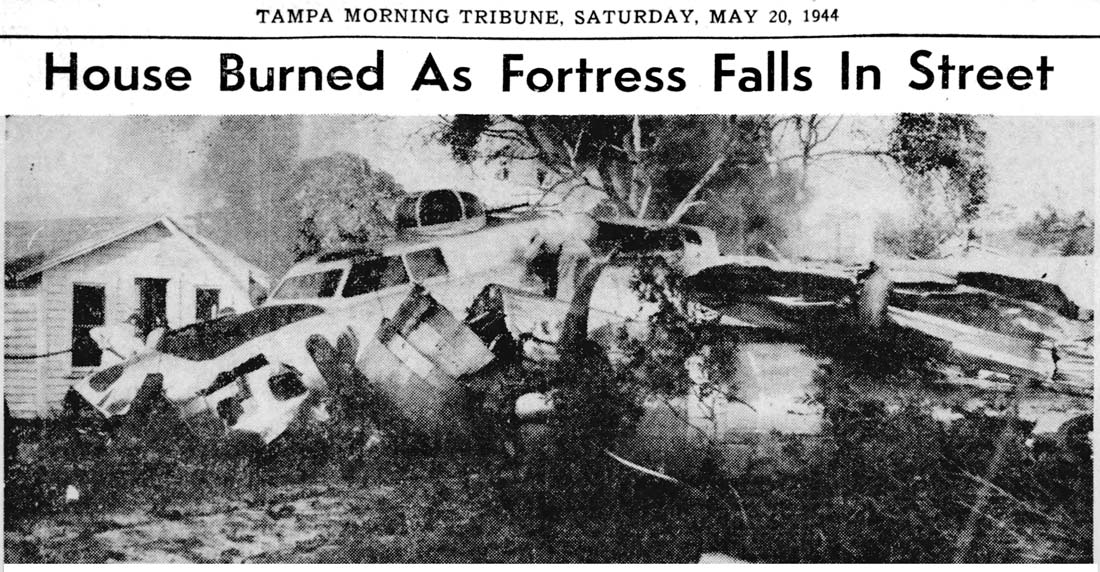B17 BOMBER CRASH IN WEST TAMPA, MAY 19, 1944
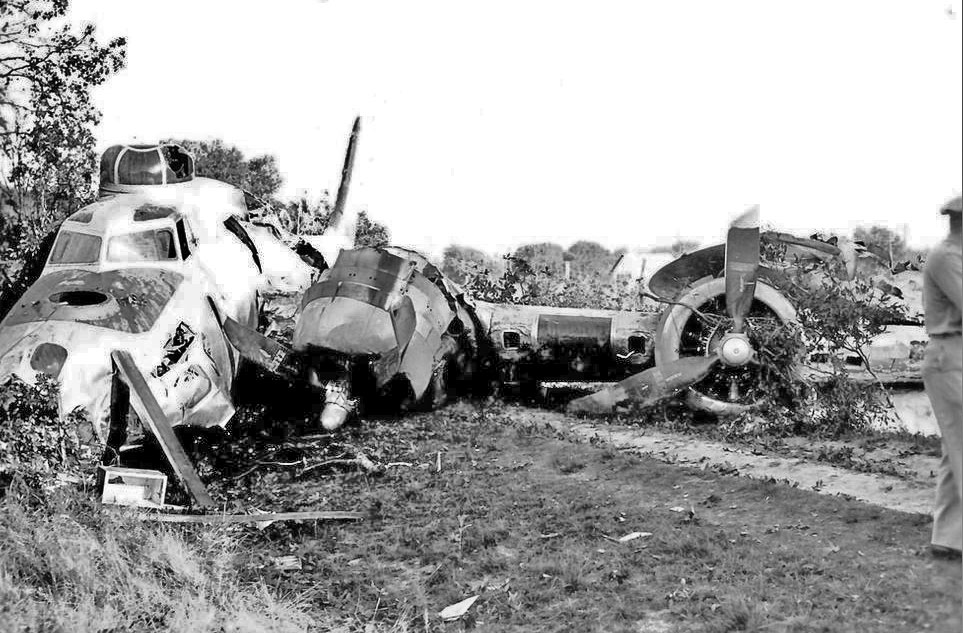
Photo courtesy of "BeetleBailey1970" at Deviant
Art.com
This location is a brisk 5 minute walk from where a
C47 Cargo plane went down in 1969
The following
narrative is from a Sunday, September 19, 1993
article about this crash by Leland Hawes, Tribune
history writer, which
is included at the bottom of this feature.
B-17 CRASHED IN WEST TAMPA, BOMBER PLOWED INTO
STREET IN '44
Shortly before 7 a.m. on May 19, 1944, a four-engine
B-17 bomber crashed on a street in West Tampa just
east of Drew Field, the giant wartime base where
today's Tampa International Airport is located.
1948 Aerial view of crash site
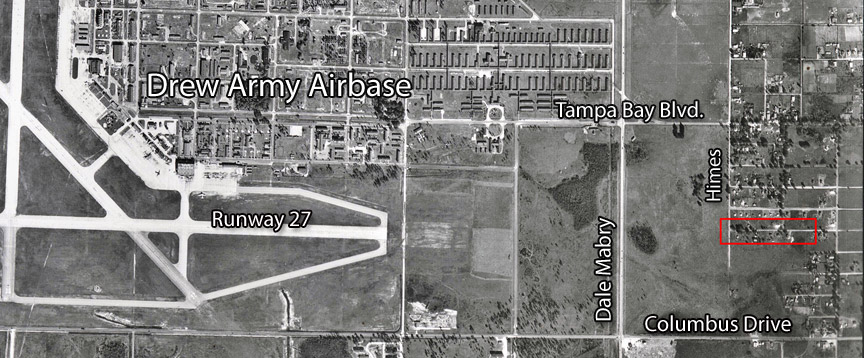
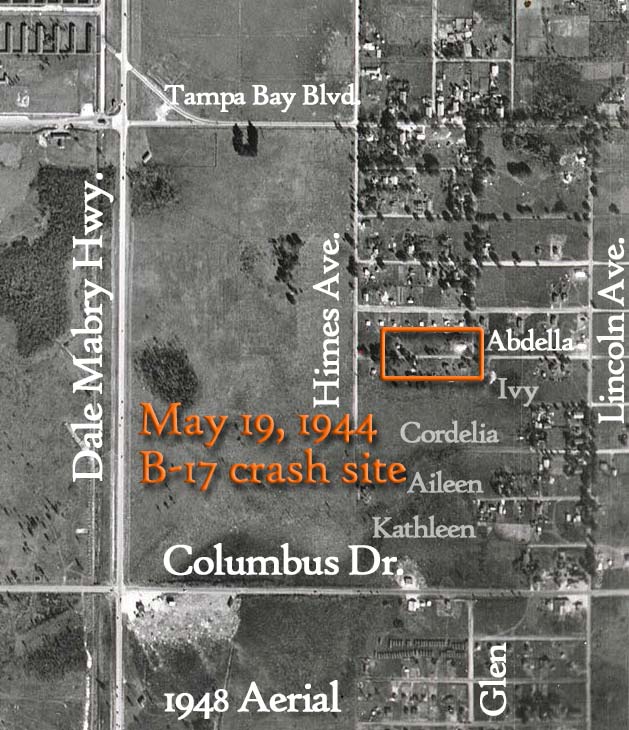
The
pilot, losing altitude after taking off on east-west
Runway 27, tried to avoid smashing into homes. Wings
of the Flying Fortress chopped the tops of oak trees
as the aircraft descended onto then-unpaved Abdella
Street.
In the tangle of power lines, tree limbs and
street-side dwellings, crew members tumbled out, some
of them with their clothing ablaze.
Several aboard were trapped as the wings broke loose
and the fuselage crumpled in the downward plunge.
Gasoline bladders in the wings burst into flames, and
practice bombs charged with black powder exploded.
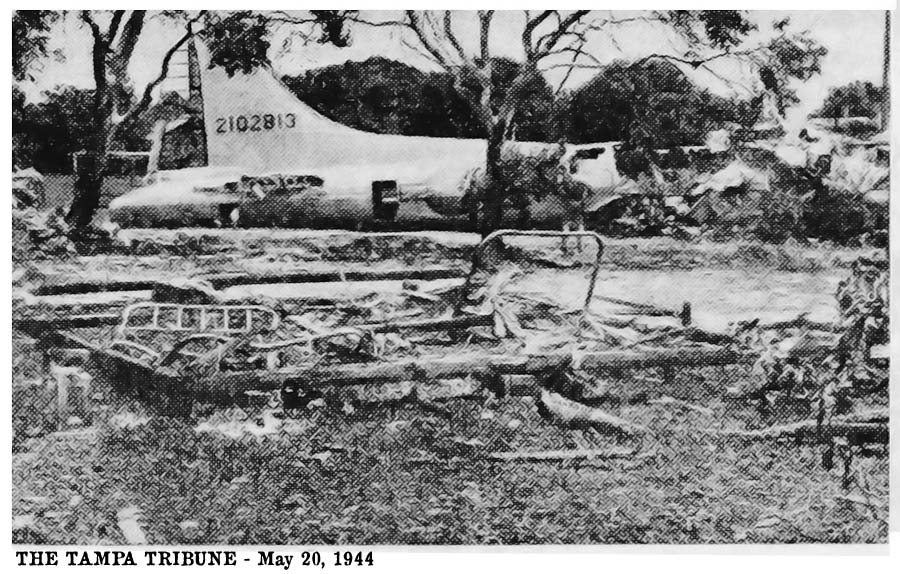
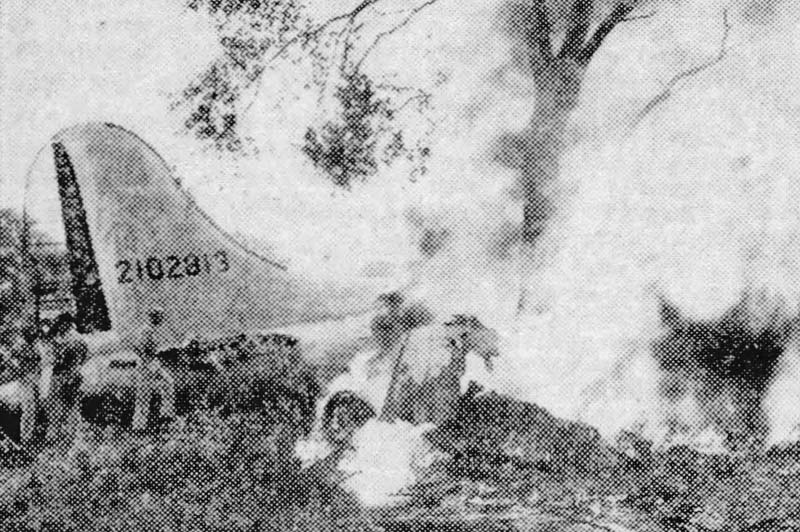
Pfc. Edward W. Westlake, who lived two blocks away,
was credited with extricating the injured pilot and
aiding other injured crewmen.
A story in The Tampa Morning Tribune told how Elaine
L. Cuddeback and her mother, Katherine L. Drew, found
an airman lying in their yard with flames licking at
his uniform.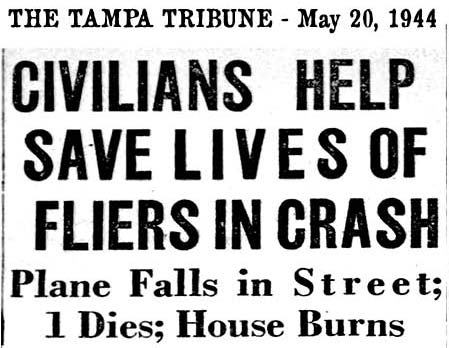
"Another soldier was trying to beat out the flames
with a life raft," she said, "so my mother and I ran
upstairs and got blankets and quilts. We finally got
the flames smothered on the boy's clothing."
Nine of the crew members were injured, three
critically. Tech Sgt. Herbert Sprague of Hudson,
Mass., died in the aftermath.
CLOUDS OF SMOKE
The home at 3505 Abdella St., occupied by Frank and
Willie Kacsik and their two daughters, Elizabeth, 5,
and Frances, 4, was destroyed by fire spreading from
the plane. A plume of smoke funneled skyward.
"It sounded as though the heavens had dropped down
upon us," Willie Kacsik told a Tampa Daily Times
reporter. "The house was filled with a cloud of smoke,
but cleared for an instant and gave me time to find my
babies were safe — and we carried them from the
house."
The Kacsik family escaped injury, but all its
belongings burned, the news story reported.

A nearby two-story home, providentially vacant, was
badly damaged.
The crash occurred between and Glen Avenue and
Lincoln Avenue on Abdella which today would be the
3400 block.
According to the Tribune article the next day,
ammunition and gasoline explosions hindered rescuers.
Here is what was reported: "An unidentified neighbor,
disregarding the popping bullets and practice bombs
inside the plane, helped an injured crew member knock
the glass away from the nose in order to extricate the
trapped nose gunner."
That injured crew member could have been First Lt.
Thomas S. Garrett III, the instructor-pilot aboard,
whose story appears on this page.
Alexander Hay, who lived at 3500 Leroy St., was quoted
as saying: "When it lit, men started spewing from all
directions. One boy was running down the road away
from the plane, with his parachute on fire. Somebody
yelled at him to get down and roll. He flopped in the
sand and rolled most of the fire out."
Hay and another neighbor, Rufus Reed, a shipyard
electrician, cut the parachute off the airman's body.
The Tribune story asserted that almost all of the
machine-gun ammunition aboard the plane exploded in
the flames. "A few of the practice bombs in the bomb
bay blew their heads," the account added.
A 13,000-volt main line leading from West Tampa into
Drew Field was knocked down by the plane. Electricity
on portions of the base was interrupted for several
hours.
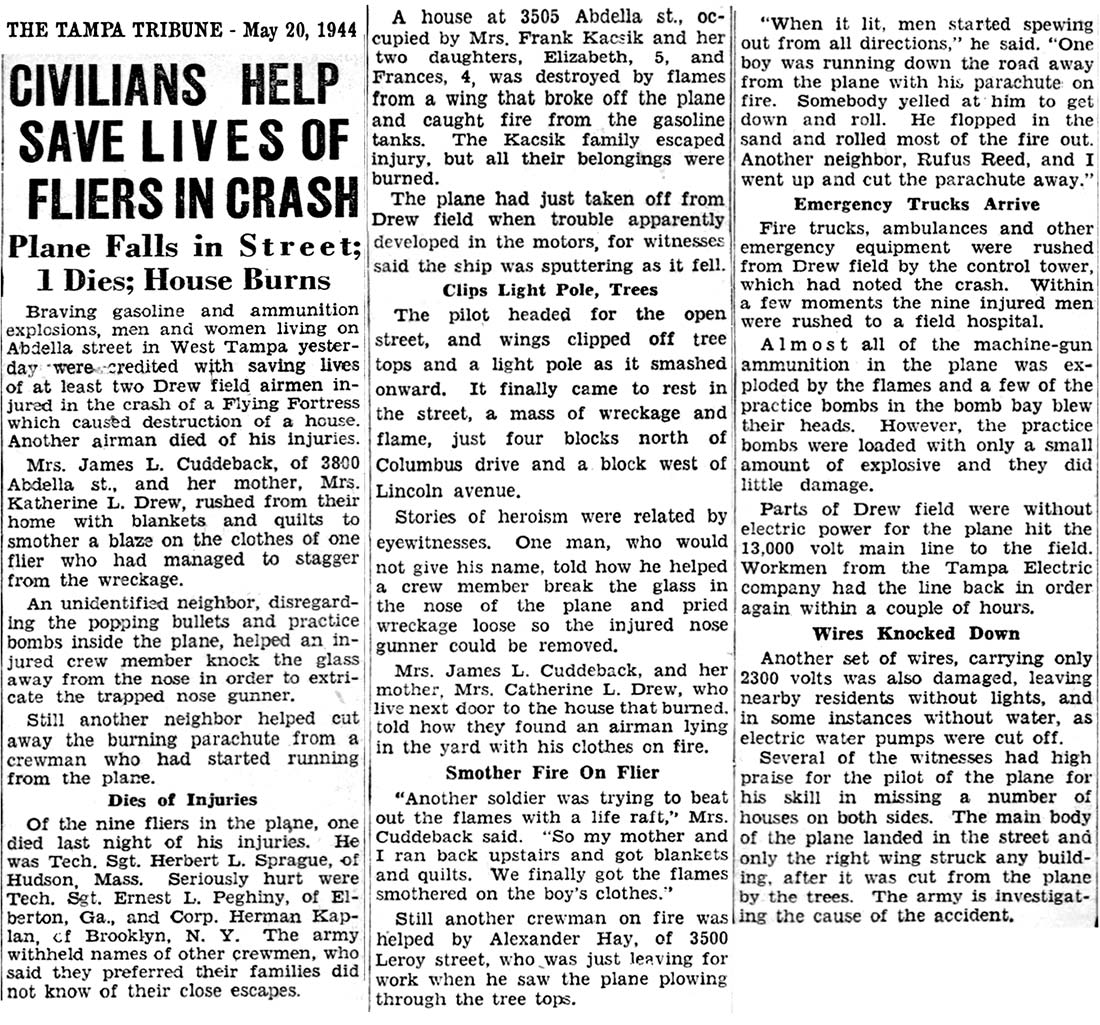
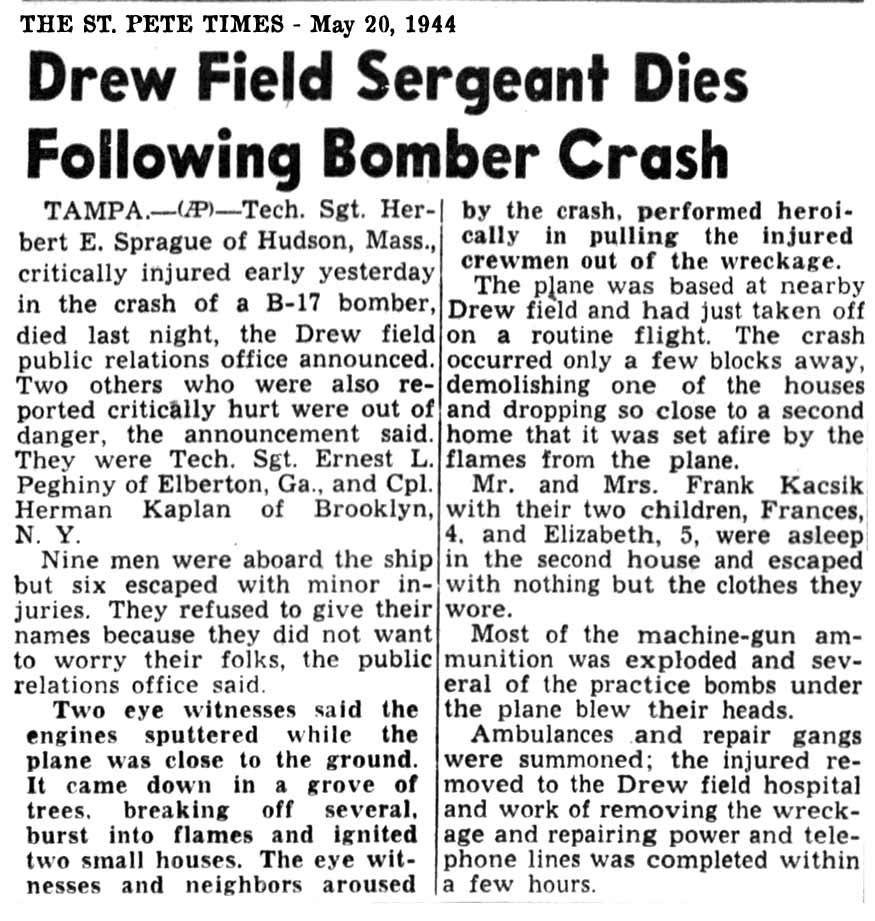
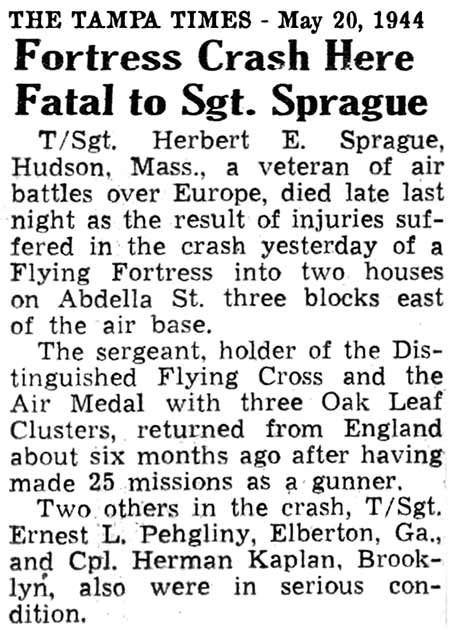
DIFFERENT MEMORIES [From Leland Hawes article
of Sep. 19, 1993]
Fred Hohnadel, a Tampa Electric Co. engineer, happened
to be in the area and found the place cordoned off by
military police. He gained entry and passed on word
that voltage distribution lines had been disrupted.
Maurice S. Johnson, who was captain of Engine 8 at
Drew Field's Station 2, said that when his 500-gallon
pumper arrived, "the plane was just smoking. ... We
sprayed fog into the wing."
Johnson, now 80 and retired in Floral City, said, "The
odor of electrical malfunction was overwhelmingly
strong within the aircraft."
Most of the injured had been removed from the crash
site by the time his unit arrived, he said. But he did
recall "one G.I., who was in shock, running around
saying, "My buddies are in there.' " This, too, may
have been pilot-instructor Garrett.
Abdella Street was then outside Tampa's city limits,
and it's unknown whether any county volunteer fire
units went to the blaze. From Johnson's recollection,
the Drew fire units may have been the only ones at the
scene.
Obviously, memories differ about details on that
morning 49 years ago in the neighborhood just a few
blocks from the Dale Mabry Highway boundary fence of
Drew Field.
Hal Shaw, who was 9 years old at the time, living at
Abdella and Lincoln Avenue, remembers crew members
"landing on neighbors' roofs, on fire, and the
neighbors coming out with blankets." He added: "The
pilot did a hell of a job putting that big of a plane
down" without causing civilian deaths or more damage.
[READ THE
ARTICLES FROM MAY 20 AND MAY 21, 1944. There
was no mention of crew members landing on neighbor's
rooftops, on fire or not. This is a perfect
example of the unreliability of an eyewitness's
memories fifty years later, especially if the
eyewitness was a child at the time.
If a crew
member landed on a rooftop, on fire, certainly one
of the witnesses would have mentioned it to the
reporter.]
Bessie Jo Almerico, who lived on Cordelia Street, one
block over, said there were such low flights that "the
lights of the planes came in our window." People were
predicting potential crashes.
I was only 11 or 12," she said. Her mother, Bessie
Hawes, was one of the first on the scene. When there
was talk of moving an injured man from the ground, she
cautioned against it because of the possibility of
internal injuries.
Almerico said the area westward toward Drew Field "was
all marshland. We went hunting for quail, and got our
Christmas trees out there."
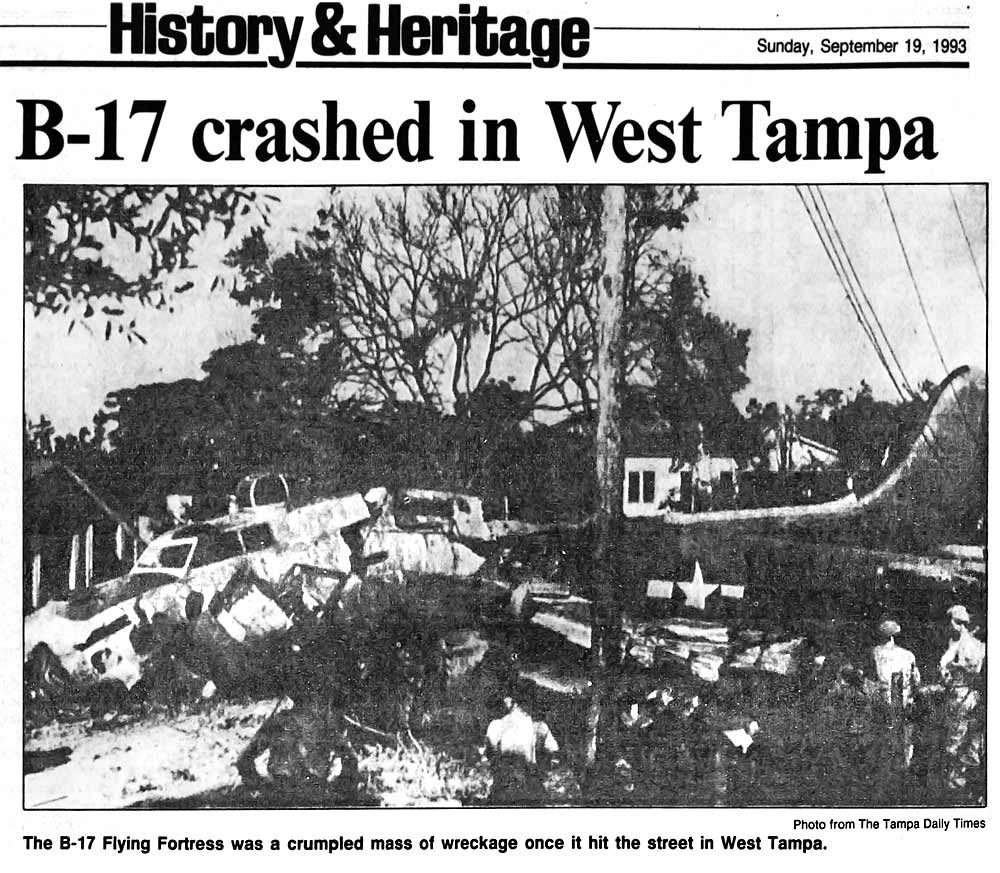
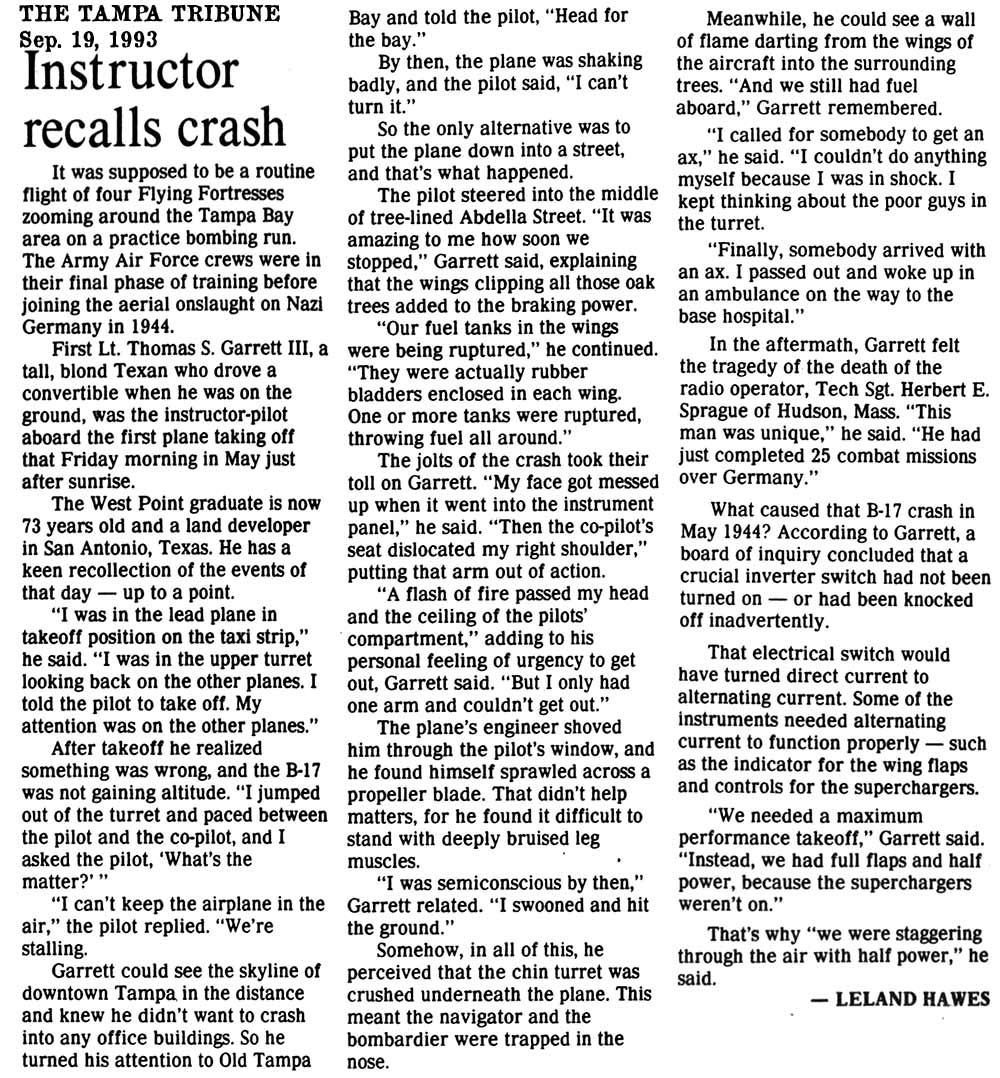
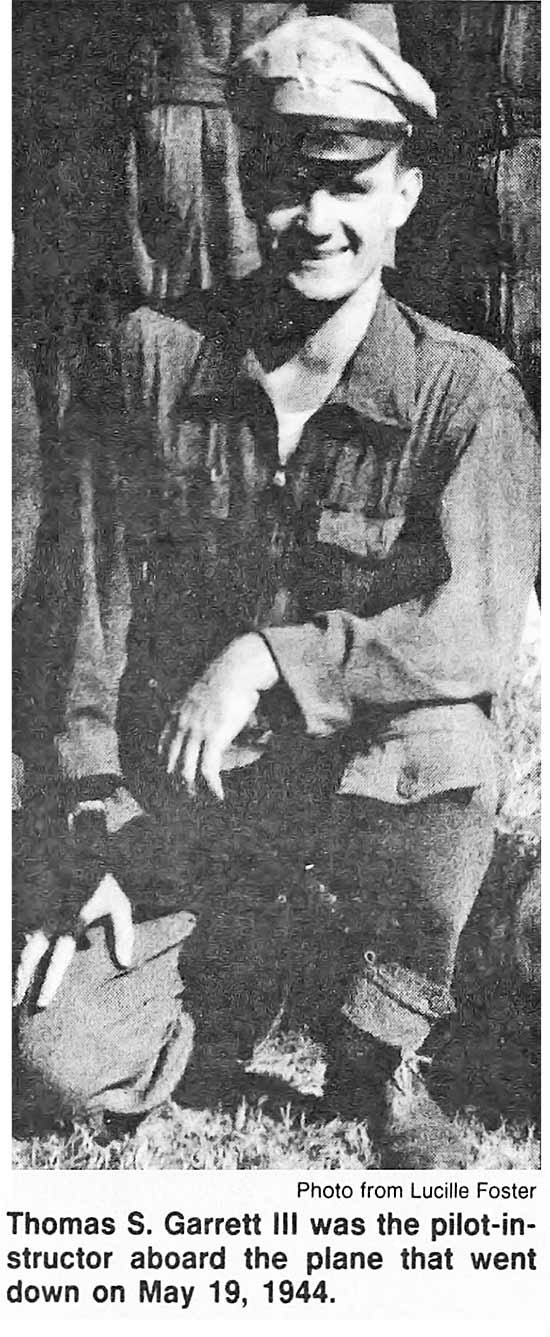
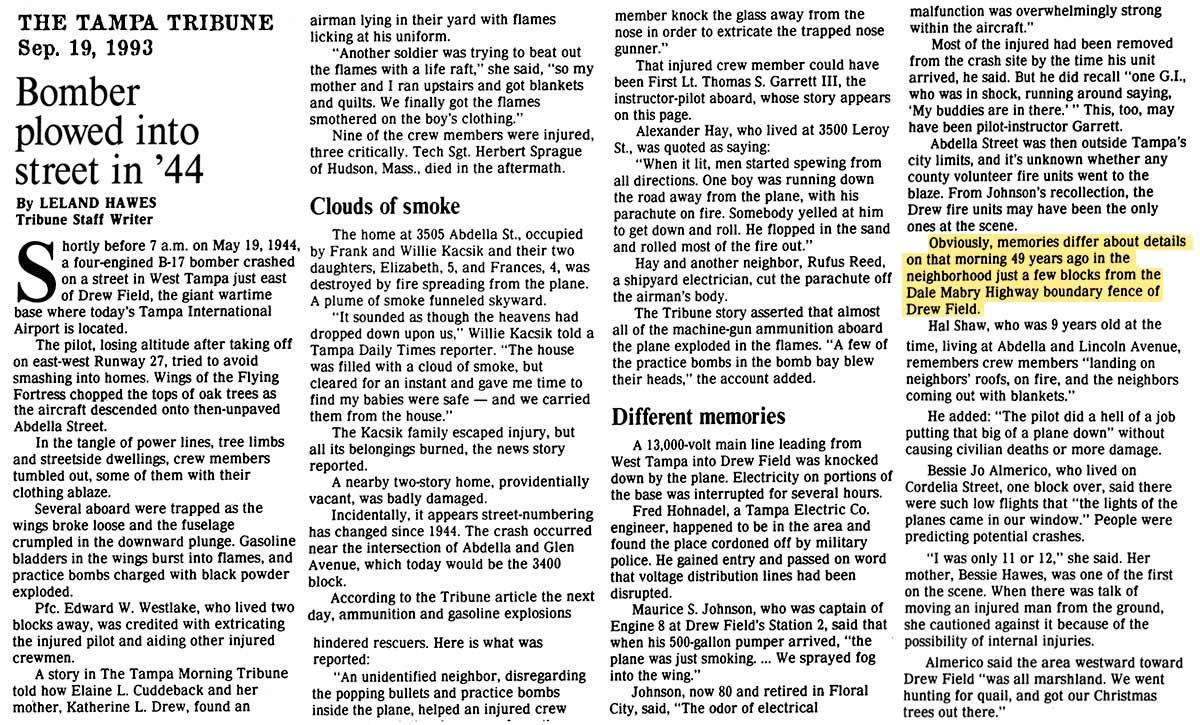
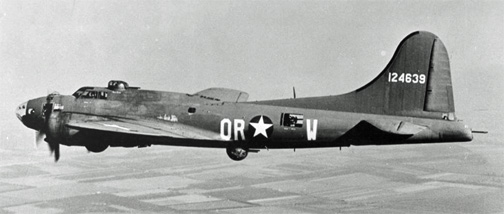
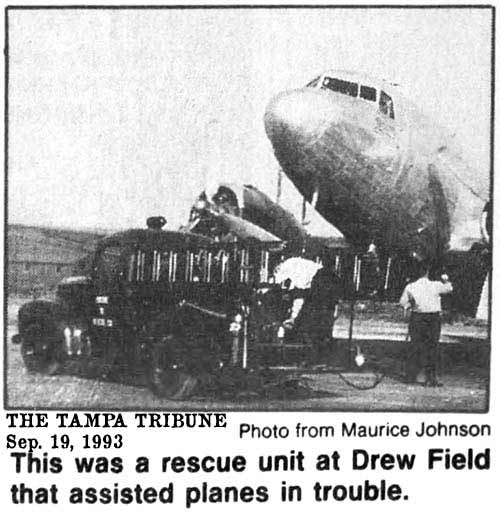
Tampapix Home

